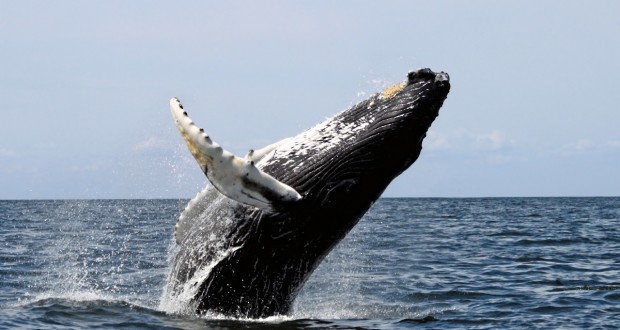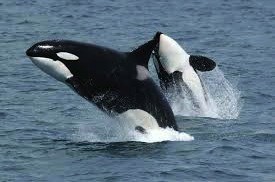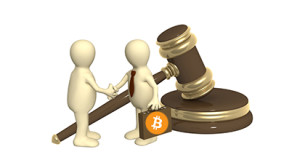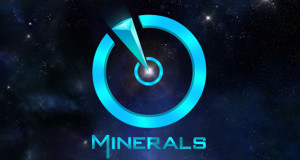I had originally intended to write this article with the aim of showing that ‘whale’ was an unfair term to use for all those that manipulate our cryptomarkets. Within minutes of researching, however, I realised that I was going to have to change my plans. Traditionally, people think of the term via it’s connotation with size, often exclusively - both whales are the biggest on their block - but I soon found there were many more analogies to be had out of this name.
What is a whale?
Whales are great big fish-looking things that are actually highly intelligent mammals, who decided long ago that the land wasn’t all that after-all. Here are a few characteristics of whales as quoted from the wikipedia entry, with a few annotations from myself:
“Whales are generally classed as predators, but their food ranges from microscopic plankton [most day-traders] to very large animals [happens to the best of the worst].”
“They imbibe enormous amounts of seawater [volume], which they expel through their baleen plates [dumping]; the krill is retained on the plates and then swallowed [panic sellers].”
“Sounding [collaboration] is a term used for whales diving [going on the attack - the pump]. It is typically only used for longer dives [the pump]. Whales typically stay close to the surface for a series of short, shallow dives [do I have to explain this bit?] while building their oxygen reserves [accumulating]. They then have a sounding dive.”
“All mammals sleep, but whales cannot afford to become unconscious for long because they may drown. [It's a dark art; it takes real commitment to make it work]“
Yet these analogies were nothing to what I found next. For the past few days I have been mulling the function, and the resulting by-products, of the incredibly prevalent nature of market manipulation. My gut-feeling was that this is how trading and markets have been for decades. Further, I figured that any manipulation of a coin should probably be taken by those emotionally or financially invested in it as a compliment - so long as the coin has clear inherent value. If it’s all hype, by Christ get out before it dumps. You probably wont get another chance.
Reading this next part, however, really made me ponder just how incredibly key whale activity may be in evolving and sustaining this newly emerging financial ecosystem:
“Whale Pump [no, I'm not making this up now]: A 2010 study considered whales to be a positive influence to the productivity of ocean fisheries [cryptomarkets], in what has been termed a “whale pump.” Whales carry nutrients [value] such as nitrogen from the depths back to the surface. This functions as an upward biological [or economic] pump, reversing an earlier assumption that whales accelerate the loss of nutrients to the bottom.”
Food for thought, perhaps. But then, this is just talking about those big fish-looking things, so it’s not relevant at all. Right?
The Killer Whales
Trying to shift the term ‘whale’ toward one I had from the start considered to be the obvious term, ‘killer whale’, had been the original intent of this piece. Yet killer whales are themselves still whales; all are part of the Cetacea order. However, not all killer whales deserve to be tarred with a bad name either; their social, cultural, and language complexity almost rivals our own, exceeding even other primates in some regards. So, if we are to narrow the name down to an inherently negative term, even more nuance is still required.
It turns out that there is a particular sub-set within the killer whale family that beautifully describes the kind of monster I would love for us to all put a name to; the adoption of such a name would be half the battle won. In the ocean, they go by the name ‘transient killer whales‘.
This particular killer whale is cunning beyond words. This killer whale is ruthless without pity. The transient killer whale is about more than simply size and strength; here we begin to delve into the realm of seemingly amoral intent, playing with seals, leading to a deception and a disregard for consequence that would chill the heart of most innocent day-dreamers pocketing their first 0.1BTC. These sociopaths-of-our-seas vocalise far less than their “brethren”, and have a far less complex language also. They would also prefer to work alone, but occasionally a target is large enough, or the modus operandi fun enough, to warrant collaboration. This capacity is what sets transient killer whales apart from the others: they are capable of killing other whales. Sorry for the mixed metaphors, but the ease with which it is possible is kinda the whole point.
One morning recently, I was walking my daughter to the park and mulling over which other similarities killer whales bring to the party. Then I remembered something I had seen which, at the time, completely took my breath away. There is a particular form of collaborative attack that has only recently been captured on film. Watch this, and try and remember that the narrator is not talking about what is currently happening to Crypt, Vericoin, Cloak - and any other coin of any hype and/or value - and shiver for what these poor seals face. Behold, the ‘wave-wash‘ - and apologies for the Americans ruining the sound track, and replacing (?!) David Attenborough’s wonderful original narration.
What might this mean for us seals?
The emphasis on these primal, anti-social, and individualistic traits leads me to conclude that ‘transient killer whale’, or to leave these instinct driven animals out of the equation, simply ‘transients’, is much better suited the darkness that lay hidden in the shadows of this sordid, beautiful world of cryptomarket birth, growth, and manipulation. Personally, I couldn’t give two shits about whales; they have always been and will be for a while yet. It’s how the game functions. But when a transient starts using psy-ops, inter-personal manipulation, grooming, feigning trust and concern, and ultimately not caring if they destroy a community.. that’s when it goes into the realm of the inexcusable for me. We need to collectively realise that money is just money; it is the social engineering that essentially defines the actions of transients as a crime against humanity.
Nothing we can do will change the fact that, for some time yet, and on average, we are the play-things of the transients (and even of your bog standard minke whale). But to end on a ray of hope, did you take note of the narrator’s insinuation that a large enough iceberg would provide protection? Get through the open waters of coin launch and adoption, and eventually, one day, those that clung on to that growing iceberg may have the potential to be safe (so long as it doesn’t melt away).
Or you could just hop onto a safe iceberg before they pinch a hold of your tail and drag you under - but it’s no fun just consistently making profit, is it?
As the icebergs get fewer, and larger, only the most cunning - the transients - will survive the innovation arms race we are witnessing. That said, transients have never had to deal with a mass of collaborative, telepathically linked seals before. We are writing a fascinating history.
When is a whale not a whale? Never, but it would be mighty useful if we began to get a bit more nuanced about the variety of whales out there, and not simply accept Wall Street’s rather innocent sounding, catch-all terminology it has itself adopted. There is nothing docile and harmless about transients. We are better than this, so let’s start formulating our own language, a language for our own age. A language which reflects our reality. Only then we can start fighting back effectively.
 CoinJoint.info Bitcoin, Altcoin and Cryptocurrency news, coverage and more…
CoinJoint.info Bitcoin, Altcoin and Cryptocurrency news, coverage and more…




